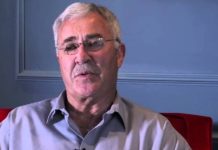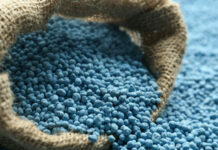
[miningmx.com] — BETWEEN 0.0005% and 0.00001% – that’s the risk
consumers run of becoming ill from using water from the water purification processes
proposed by Western Utilities Corporation (WUC) for treating acid mine effluent.
These figures are the risk ratios determined from testing water samples from a pilot
plant over a three-year period and measuring the results – the amount of toxins they
contained – according to guidelines from the Department of Water Affairs.
The pilot plant – comprising two test facilities in which two different technological
processes were evaluated – was completed in 2003 and over the subsequent three
years, until end-2006, continuously subjected to large-scale testing.
The results of this research, which is regarded as exceptionally valuable intellectual
property, were shown to Sake24 by an independent scientist with permission
from WUC. We were therefore not able to obtain a copy, but were permitted to
examine them briefly under supervision while the results were explained by a
scientist. No notes were permitted.
The results are contained in a report that sets out the testing processes at the pilot
plant. The facility is on Rand Uranium’s premises near Randfontein.
The levels of radioactivity measured in the water samples carry a one in four million
risk of cancer. Percentage-wise this is 0.000025%.
Risk ratios at these levels are not in fact considered significant, as they are so low as
to be pure speculation, explained one of the scientists.
Some water experts and government consultants such as Professor Anthony Turton –
whom Sake24 last week identified as Marketing Strategist for Trailblazer
Technologies, a new company which is preparing to make a competing bid for the
processing of acid mine water in the Witwatersrand Basin – has since 2009 gone on
the warpath against the WUC proposal.
In Facebook debates, Turton said that a 98% risk (implying a 98% efficacy rate) is a
very high standard and probably beyond the ability of the WUC process.
A 98% risk, he said, means that two cases out of 100 or one in 50 is unacceptable.
It would be wonderful if you were one of the 49 not manifesting the risk, but not so
much if you were one of those beginning to show symptoms of a particular toxicity.
Later on in the debate, when participants asked for a discussion on the one-in-50 risk
ratio, he added as an afterthought that it had been an example, not an absolute
statistic.
He also claims that WUC is using a legislative loophole to classify waste containing
heavy metals as a substance that can be processed further. According to him, such
waste is dumped in a tailings dam and left there, where it contaminates the
ecosystem.
Mining groups, and gold mines in particular, have frequently been guilty of such
practices, but the recovery of metals from these materials is an integral part of WUC’s
business plan in order to justify its unit costs. A plant for the extraction of every
single type of metal would be constructed to that end.
Classification of the substances was not done by WUC, but by the Council for
Geoscience following wide-ranging tests, including tests for acid rain runoff from a
tailings dam.
Turton persists in contending that WUC’s public consultation process was inadequate.
Other interested parties involved in the public participation process say the process
was nothing but impressive.
“WUC worked very hard on it,’ said a prominent player.
There are only three facilities in the world that convert acid mine water into drinking
water – Anglo Coal’s eMalahleni facility in Mpumalanga, the Optimum plant at the
Optimum coal mine, also in Mpumalanga, and Rio Tinto’s Kennecott facility in Utah in
the US.
The three all use reverse osmosis; an expensive process.
WUC’s proposed project, however, would use a process known as the ABC process, or
the alkali-barium-calcium process. It was developed by the Council for Scientific and
Industrial Research, Turton’s former employer, and is thus a South African innovation.
Some of the scientists with whom Sake24 discussed the WUC project have
worked on the other two South African projects as well.
They pointed out that there was indeed some uncertainty about the retrievability of
barium in the WUC process. Barium is expensive and needs to be retrieved to make it
affordable, while the recovery process has not been tested as fully as is usual for a
new technology.
Sake24 was told that the tests had not been as comprehensive as required
for scientific purposes. Those that had been done had been successful.
But they certainly had not affected the safety standards in WUC’s water product.
Nevertheless they could have operating cost implications later, said this source, an
engineer who has had a supervisory role in all three processes.
Professor Jannie Maree, Chairperson of the Rand Water Chair of Water Utilisation at
the Tshwane University of Technology in Pretoria – who is regarded as the foremost
academic expert in the country in this regard – also supervised the research and
testing of WUC’s pilot plant.
“It’s my personal opinion that chemical treatment of mine discharge holds great
potential for affordable water recycling. Chemical treatment of mine water should not
be regarded with suspicion. The same goes for chemical desalination of mine water,’
says Maree.
When Turton is confronted with such pronounements by experts, he says his objection
to the WUC proposal is ethical. He says the political risk of processing waste water
and selling it to 11 million people – the estimated number of Rand Water clients – is
in his view too great.
He apparently used this argument to dissuade President Jacob Zuma and other
members of Cabinet from accepting the WUC proposal.
– Sake24









